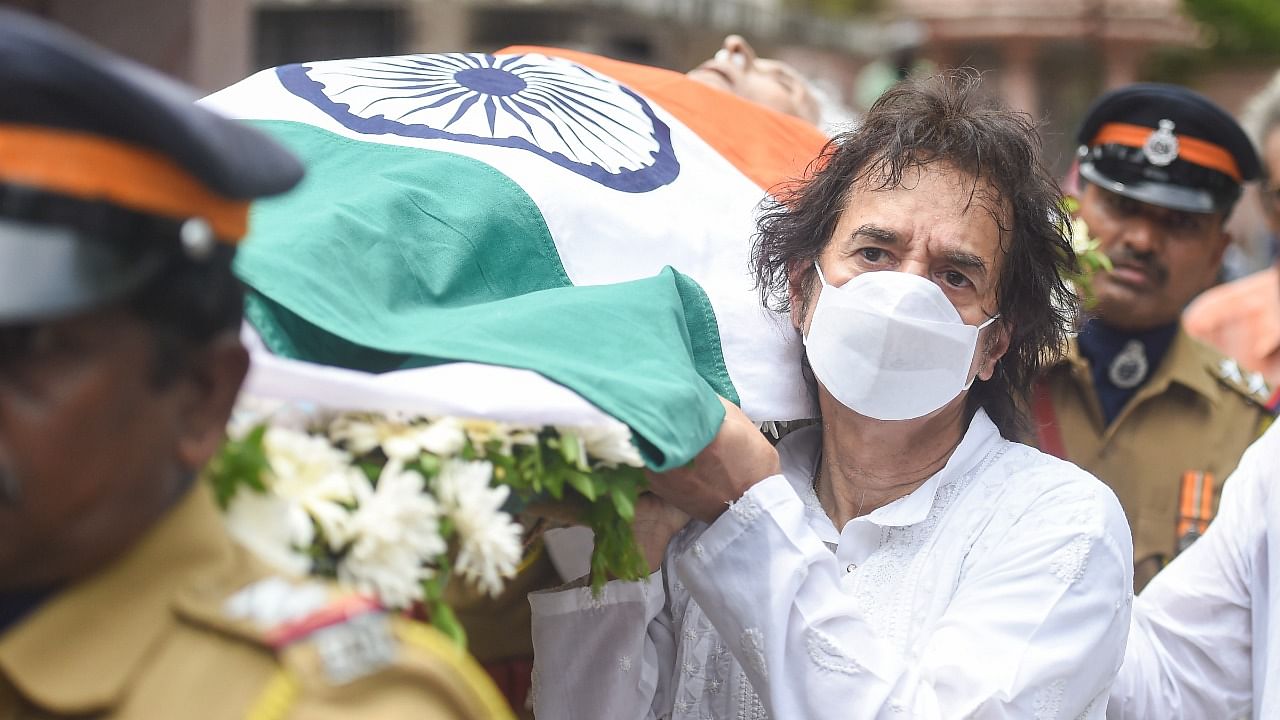
It was nice to see something touching and pure trend on social media last week when santoor maestro Pandit Shivkumar Sharma passed away at the age of 84. Tabla maestro Ustad Zakir Hussain, 71, would be a pallbearer and was later photographed standing alone, utterly bereft, as the body of the senior artist with whom he had many collaborations was consigned to the flames. My friend, the art and music critic, S Kalidas, says the two artists understood each other's rhythm, melody and timing perfectly on stage and were innovators in Hindustani classical music. One of Shivkumar Sharma's most epic and popular works was the 1967 light classical album, Call of the Valley, which was a collaboration with Pandit Hariprasad Chaurasia on flute and Brij Bhushan Kabra on guitar. Likewise, Zakir Hussain continues to collaborate and innovate, famously so with jazz musicians.
But he is steeped in pure classical music as the son of Ustad Allah Rakha. The late Ustad was outstanding in his own space but also known for being the most frequent accompanist during Pandit Ravi Shankar's sitar performances. The sitar maestro, in turn, learnt his music in the Maihar Gharana of Baba Allauddin, the great teacher who sent forth into the world arguably the greatest sitar player along with the greatest sarod player of an era, his son Ali Akbar Khan (Maihar is located in Madhya Pradesh).
Indeed, many of the great gharanas of Hindustani classical music were founded by ustads who happened to be Muslims because music was a hereditary tradition among some social groups who embraced Islam. Take the most influential Kairana Gharana that gets its name from the west Uttar Pradesh town from where its founder Abdul Karim Khan emerged and would create and impart the powerful "Kirana" style gayaki along with his nephew, Abdul Wahid Khan. Abdul Karim Khan would travel and carry his music to Maharashtra and Karnataka. His most famous disciple was Pandit Sawai Gandharva, who in turn would teach Gangubai Hangal and Bhimsen Joshi, both of whom need no introduction.
Take another gharana called the Jaipur Atrauli Gharana, founded by Alladiya Khan, whose family came from Atrauli near Aligarh but moved to Jaipur and eventually, the Ustad would pass away in Bombay. The most famous exponents of this Gharana are Kesarbai Ketkar, Mallikarjun Mansur, and Shruti Sadolikar, among others. Move on to the Gwalior Gharana, whose foundation is traced to the reign of Mughal emperor Akbar and one of his nine ratans or jewels, Tansen, who came from Gwalior. Among the early ustads of this Gharana were Haddu Khan, Hassu Khan and Natthu Khan, who died in the 19th Century. Eventually, this Gharana would produce outstanding vocalists, many of whom would be pandits while others were Muslims who would carry the tradition to different parts of India. Krishnarao Shankar Pandit, a musician of this Gharana, would open the Shankar Gandharva Vidyalaya in Gwalior and leave a legacy in both practising and studying classical music.
Finally, let us never forget the life and legacy of Ustad Bismillah Khan who lifted the profile of the shehnai, taking it to classical music concerts. Old-timers in Varanasi remember the routine of the musician who would be the recipient of the nation's highest civilian honour, the Bharat Ratna. Bismillah Khan passed away in 2006, but in his lifetime would practice playing the shehnai at Balaji Ghat, take a dip in the Ganges and often perform at the Kashi Vishwanath temple. He was a devout Shia Muslim.
Goonj Uthi Shehnai, a classic 1959 Hindi film, tells the story of a shehnai player; Bismillah Khan performed for the film and played the background score and in the songs. One of the songs in the movie is the classic 'Tere sur aur mere geet' (your tunes and my songs). Listen to the beautiful rendition by Lata Mangeshkar carefully and hear the shehnai play along as well. The following lyric of the song after 'Tere sur aur mere geet' is 'dono milkar banegi preet' (then the two unite, we shall have joyous love). The lyrics of this song beautifully express the inherent pluralism embedded in the very foundations of our music. You can demolish mosques and temples, but you cannot separate the Hindu from the Muslim in the world of Hindustani classical music. The music is made together.
(Saba Naqvi is a journalist and author)
Disclaimer: The views expressed above are the author's own. They do not necessarily reflect the views of DH.